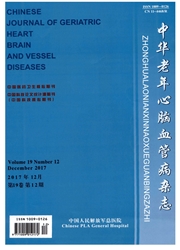

 中文摘要:
中文摘要:
目的观察不同致炎剂刺激大鼠硬脑膜的神经源性炎性反应,为建立慢性偏头痛模型提供实验依据。方法雄性SD大鼠24只,随机分为4组,生理盐水组、致炎剂组、降钙素基因相关肽(CGRP)组、致炎剂+CGRP组,每组6只。使用激光多普勒血流仪检测刺激前后各组硬脑膜动脉血流量,甲苯胺蓝染色观察肥大细胞脱颗粒数及脱颗粒比例,伊文思蓝荧光法观察大鼠硬脑膜血管渗出情况。结果与刺激前比较,致炎剂组、CGRP组、致炎剂+CGRP组大鼠刺激后脑血流明显增多。致炎剂+CGRP组大鼠脑血流量较生理盐水组、致炎剂组、CGRP组明显增多;致炎剂组、CGRP组、致炎剂+CGRP组大鼠硬脑膜肥大细胞脱颗粒比例较生理盐水组明显增加。致炎剂+CGRP组大鼠硬脑膜肥大细胞脱颗粒比例较致炎剂组及CGRP组明显增加。致炎剂组、CGRP组、致炎剂+CGRP组大鼠硬脑膜荧光红斑明显多于生理盐水组。结论致炎剂十CGRP较常规致炎剂、CGRP刺激大鼠硬脑膜可以引起脑血流显著增加,肥大细胞脱颗粒及血管渗出,从而发生神经源性炎性反应。
 英文摘要:
英文摘要:
Objective To observe neurogenic inflammation in the rat dura mater induced by different inflammatory agents, in order to provide evidence for establishing migraine model. Methods Twenty-four male SD rats were randomly divided into four groups: normal saline group (group NS) ,inflammatory agent group(group IA), calcitonin-gene-related peptide group(group CGRP), inflammatory agent+CGRP group(group IA+CGRP). The laser Doppler flowmetry was applied to detect dural blood flow before and after stimulation by inflammatory agents. The count and rate of mast cell degranulation were observed with the method of toluidine blue staining. Rat dural vascular exudant were observed with fluorescence microscope before and after the treatment with inflammatory agents. Results In the groups of IA, CGRP and IA+ CGRP, the dura blood flow was significantly increased after stimulation, and the IA+CGRP group showed more significant increase than other groups. Compared with NS group, the count and rate of mast cell degranulation showed significant increase in the groups of IA, CGRP and IA+ CGRP, the increase in IA+ CGRP group was most significant. After the stimulation, more visible red fluorescent spots were oberved in the groups of IA, CGRP and IA+CGRP compared with group NS,indicating that there was significant increase in vascular permeability of the dural vessels. Conclusion The significant increase in dural blood flow and vascular permeability as well as the degranulation of mast cells was induced by IA+CGRP,causing neurogenic inflammation.
 同期刊论文项目
同期刊论文项目
 同项目期刊论文
同项目期刊论文
 期刊信息
期刊信息
